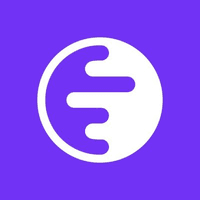
Ink Airdrop
Ink is Kraken’s Layer 2 chain built on the OP Stack, focused entirely on DeFi. It offers fast transactions, low fees, and native access to Ethereum’s liquidity. Unlike most L2s, Ink isn’t trying to be everything—it’s aiming to be the go-to chain for capital-efficient DeFi. Backed by Kraken and integrated into the Optimism Superchain, it’s a clean execution play with real infra and clear incentives coming.
Airdrop farming steps
Step-by-Step Guide to Farming Ink Airdrop
Set Up Your Wallet: Go to https://inkonchain.com/ and click on "Connect" to link up with any EVM-compatible wallet.
Bridge Funds to Ink: Use a supported bridge from the official dashboard: https://inkonchain.com/dashboard./bridge. Kraken also allows zero-fee ETH withdrawals directly to Ink.
Use Onchain Apps on Ink: Browse the available apps at https://inkonchain.com/dashboard./apps and interact with DeFi protocols on Ink to generate real usage. Example activities include supplying or borrowing assets; swapping tokens and providing liquidity; or using services like 3DNS and ZNS to register onchain domain names.
Be Consistent: Return regularly, try new apps, and rotate activities to show broad and sustained usage.
Stay Updated: Follow Ink's socials to stay informed about updates like new apps, or new airdrop details.
Project Review
Problem Solved
Ink is a DeFi-focused L2 that doesn't reinvent the wheel but seeks to make it faster and easier to use. Backed by Kraken, it provides a user-centric on-ramp that reduces friction when moving funds onchain. Ink’s Optimism-based rollup bundles transactions to lower costs and offers one-second finality, tackling Ethereum’s scalability issues. As part of the Optimism Superchain, it also solves liquidity fragmentation by enabling seamless cross-chain token movement, so users don’t face cumbersome bridging processes across Layer 2s. In short, Ink’s approach combines familiar CeFi trust with onchain efficiency to make decentralized finance more accessible and capital-efficient for a broad audience.
Tokenomics
Initially, Kraken had no plans for a token to avoid regulatory pitfalls. However, in mid-2025 the nonprofit Ink Foundation introduced INK, a native utility token with a permanently fixed supply of 1 billion. INK’s design emphasizes utility over speculation: it has no governance role over the Layer 2 itself. Instead, INK incentivizes liquidity and lets holders guide resource allocation for DeFi protocols on Ink (for example, deciding rewards for lending markets). Distribution is community-focused – the foundation will airdrop INK to early users of Ink’s Aave-powered lending platform and other genuine participants, using strict anti-Sybil measures to curb unfair farming. This approach aims to decentralize token ownership without compromising the network’s technical control (which remains with the Ink team until further decentralization).
Perspectives
Ink’s future depends on its ability to establish a unique identity among dozens of Layer 2s targeting the same liquidity, dev talent, and users. Its edge lies in Kraken’s support and deep OP Stack integration, but neither guarantees traction. The challenge is to convert initial hype into long-term relevance, especially as users and builders become more selective. Without clear differentiation, Ink risks being another short-lived L2 experiment.
Founders and Team
Ink was incubated by Kraken and is led by founder Andrew Koller, a Kraken product lead who spearheaded the project. Kraken’s role is central – the exchange’s decade-long expertise in security and compliance provides a strong foundation for Ink’s development. Kraken engineers and product teams worked to build Ink, which is now stewarded by the independent Ink Foundation for neutrality.
The team has shown solid execution capability so far: they launched Ink’s mainnet ahead of schedule due to high builder demand and a successful testnet. Kraken’s backing also means Ink can draw on substantial resources and talent, and the exchange’s reputation lends credibility when attracting partners.
Funding
Investor: Optimism Foundation
Unlike many crypto projects, Ink did not go through traditional VC fundraising, it has been financed internally by Kraken, ensuring a stable funding pipeline from a profitable exchange. In addition, the Optimism Foundation awarded a 25 million OP token grant (valued at approximately $42.5 million) to Ink to support its integration into the Superchain. The combination of Kraken’s backing and this substantial grant gives Ink a strong runway to execute its roadmap.
Community
Ink’s official X profile attracted over 120,000 members, and the public testnet saw millions of transactions from hundreds of thousands of wallets – a clear sign of massive early interest. Much of this buzz has been driven by airdrop speculation and Kraken’s reputation, drawing in both DeFi enthusiasts and opportunistic “airdrop hunters.” At the same time, the Ink Foundation is keen to encourage genuine participation over pure speculation – it has signaled that airdrops will target real users of the network’s DeFi protocols. To cultivate a lasting community, Ink’s team has organized hackathons, developer meetups, and offers support for builders. This approach suggests Ink is striving for a sustainable community that can persist after the initial hype.
Competitors
Ink competes directly with Base, Arbitrum, Optimism, Linea, and other OP Stack or zkEVM rollups. Most offer similar features: low fees, fast finality, and EVM support. Kraken’s backing and DeFi-first orientation provide some narrative edge, but not an exclusive one. Ink must differentiate on actual dApp traction and builder retention. Most users won’t care about underlying infra if the UX and incentives are better elsewhere. Without standout apps, incentives, or a distinct ecosystem culture, Ink risks being just another technical clone in a market oversaturated with L2s. Execution, speed, and ability to create a sticky ecosystem are critical.
Conclusion
Ink checks most of the boxes for a serious L2 contender—real infrastructure, Kraken’s support, Superchain alignment, and clear DeFi positioning. But those boxes are getting crowded. Ink needs more than speed and low fees to matter, it needs sticky apps, builders who stay, and users who don’t leave after the airdrop. For now, it’s worth watching and farming. Long-term success depends on how well they execute beyond the launch hype.
